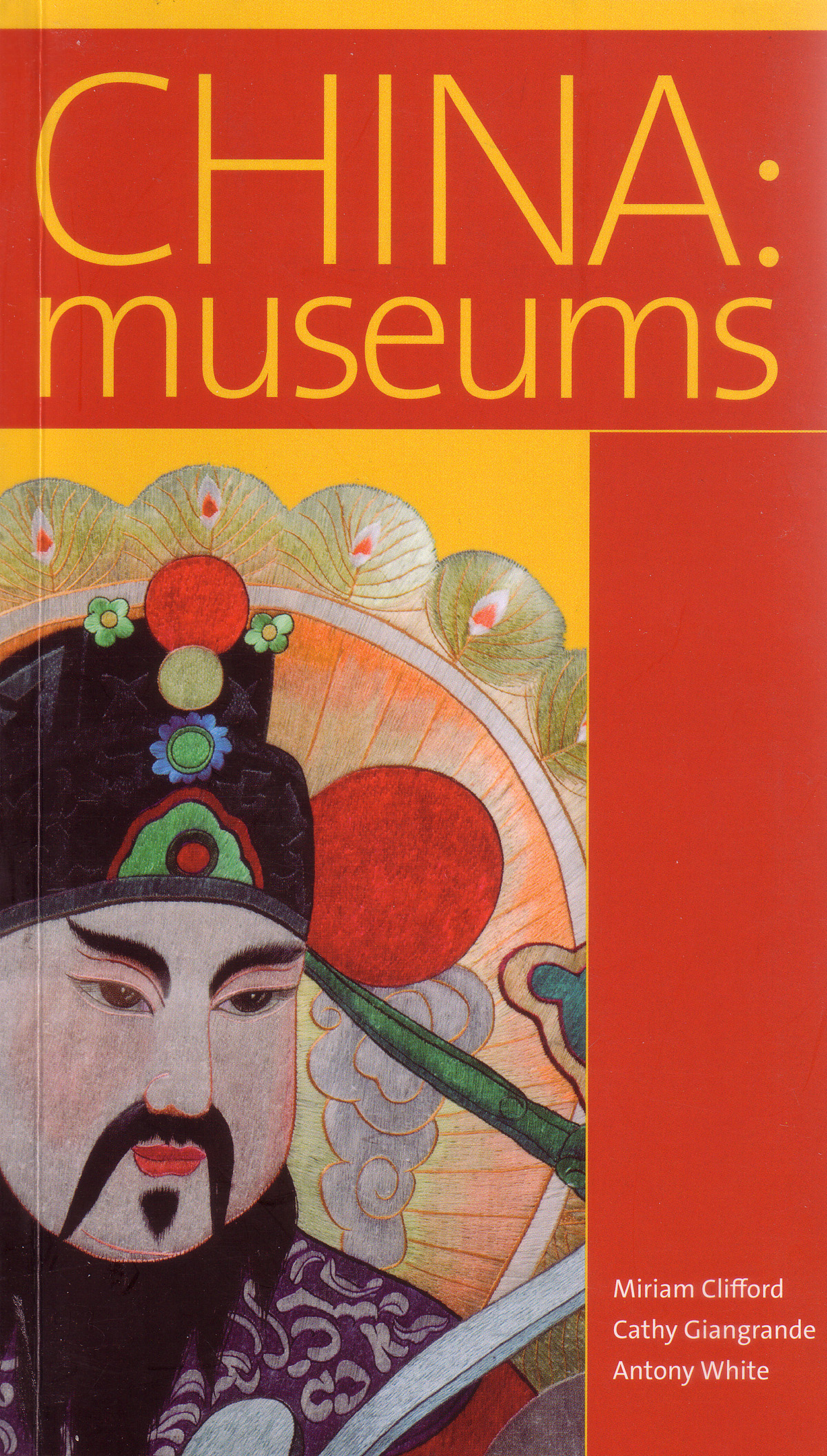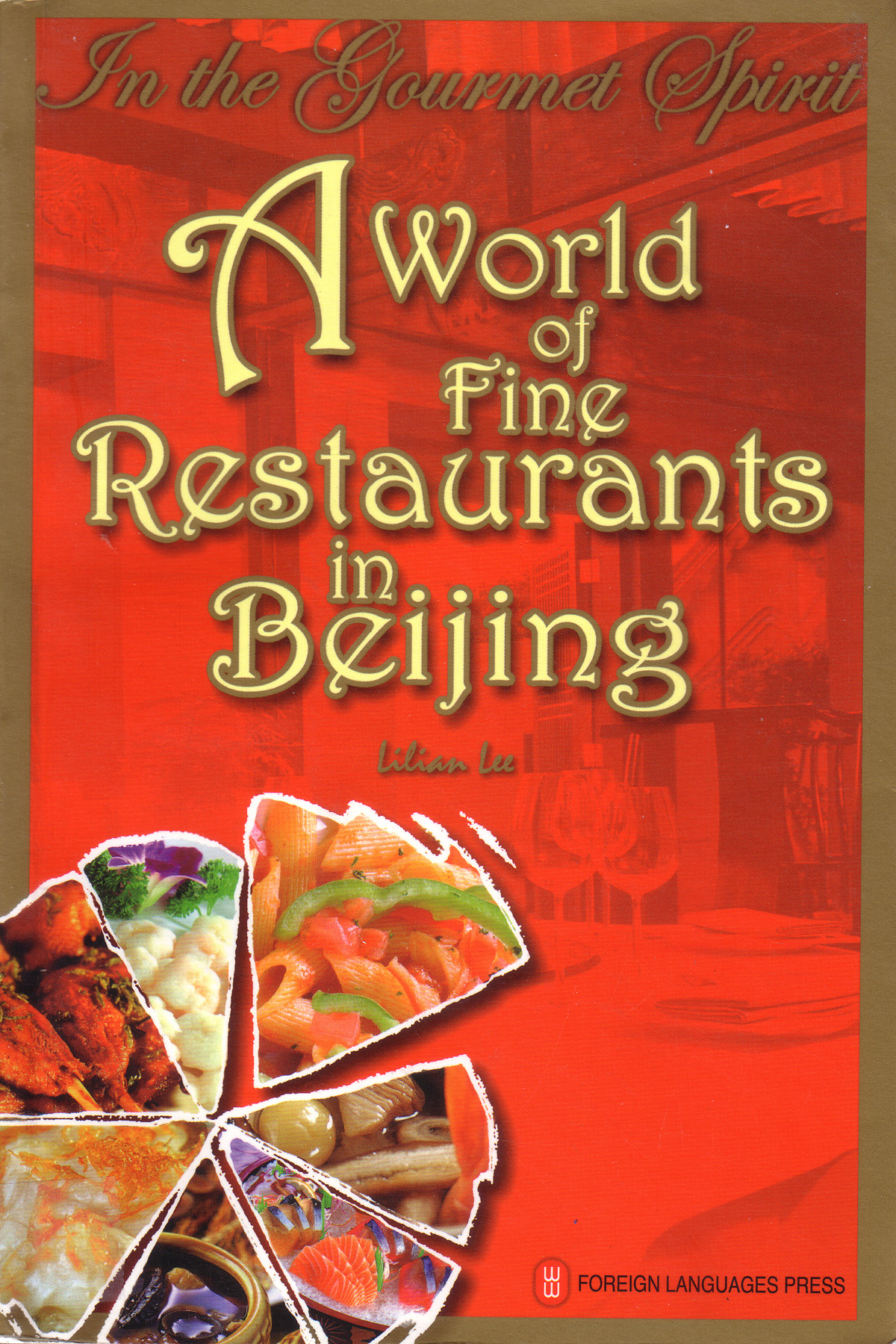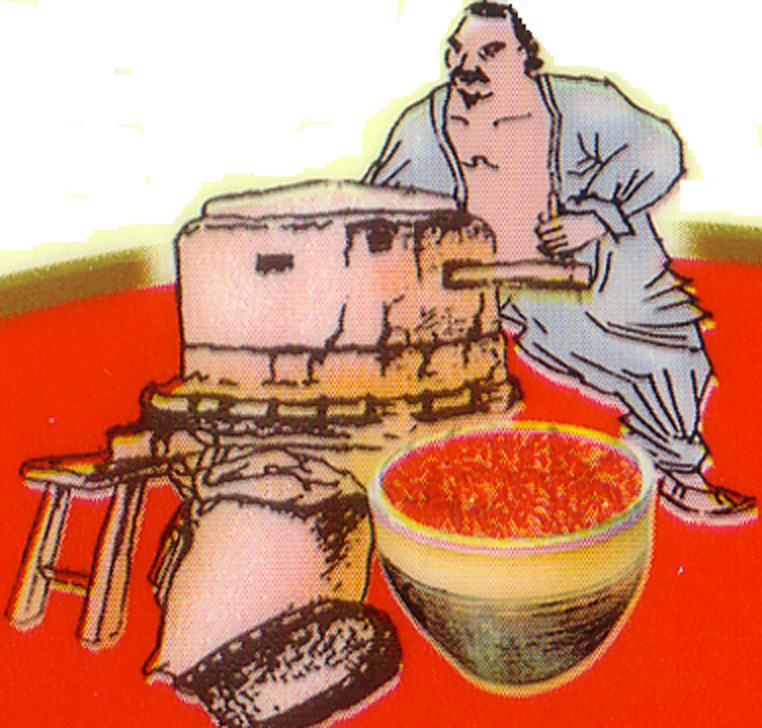
| What is Flavor and Fortune? |
| How do I subscribe? |
| How do I get past issues? |
| How do I advertise? |
| How do I contact the editor? |
Read 12688034 times
Connect me to:
| Home |
| Articles |
| Book reviews |
| Letters to the Editor |
| Newmans News and Notes |
| Recipes |
| Restaurant reviews |
| Article Index (all years, slow) |
| List of Article Years |
| Article Index (2025) |
| Article Index (last 2 years) |
| Things others say |
| Related Links |
| Log In... |
| Authors |
| Categories & Topics |
TOPICS INCLUDE: Sugar Cane; Museums in China; Variation suggestion; Lotus root cake; Min food; Grinding beans and chili peppers
| by Jacqueline M. Newman |
Letters to the Editor
Winter Volume: 2009 Issue: 16(4) page(s): 14, 15, and 33
From JERRY via-mail:
I see sugar cane in many Chinese markets but have never seen a recipe for is use. Have you? Would love to purchase some for cooking, but only know to peel and chew it. With your extensive cookbook collection, can you help?
JERRY: Yours was a challenge, because if I did see its use, and I do not recall where, So search I did, and luck was on your side when I peered into Tony Hsu's Creative Fruit Recipes. There I hit pay-dirt, and hopefully your pleasure. We redid the recipe in common American measured amounts. Also changed the size of the meat to match that of the pieces of sugar cane, and used some garnish so the presentation perked up.
From DICK in CARSON CITY NV:
Thanks for the tip in the last issue about the museum in Shanghai. Any you would suggest in Beijing and Tianjin? And while asking, how about restaurants in Beijing; any suggestions there?
 DICK: Before additional requests come in city by city, let me recommend a new and fine book about Museums in many cities in China. Some issues ago we did review a similar though smaller and less complete volume. Now a newer, larger and more comprehensive volume came across my desk. Pictured on this page, it has considerable detail about each of them, is called China Museums; it is by Miriam Clifford, Cathy Giangrande, and Antony White, and published by Odyssey Books and Guides in Hong Kong in 2009. Should you or anyone be going to China, if you cannot locate it, contact the publisher at: Email.magnus@odsseypublications.com or call W.W> Norton, the US distributor @ (800) 233-4830. Do not go without it!
DICK: Before additional requests come in city by city, let me recommend a new and fine book about Museums in many cities in China. Some issues ago we did review a similar though smaller and less complete volume. Now a newer, larger and more comprehensive volume came across my desk. Pictured on this page, it has considerable detail about each of them, is called China Museums; it is by Miriam Clifford, Cathy Giangrande, and Antony White, and published by Odyssey Books and Guides in Hong Kong in 2009. Should you or anyone be going to China, if you cannot locate it, contact the publisher at: Email.magnus@odsseypublications.com or call W.W> Norton, the US distributor @ (800) 233-4830. Do not go without it!
 And as to places to eat in Beijing, we have not been there recently, but Lilian Lee's A World of Fine Restaurants in Beijing is an item I plan to tote on my next trip; its cover is on this page. Took lots of searching once we heard about it wandering the web. To ease your doing that, the ISBN is: 978-7-119-05466-7; it was published in that city, and by Foreign Languages Press in 2008. The book provides a contact for the publisher at: www.flp.com.cn
And as to places to eat in Beijing, we have not been there recently, but Lilian Lee's A World of Fine Restaurants in Beijing is an item I plan to tote on my next trip; its cover is on this page. Took lots of searching once we heard about it wandering the web. To ease your doing that, the ISBN is: 978-7-119-05466-7; it was published in that city, and by Foreign Languages Press in 2008. The book provides a contact for the publisher at: www.flp.com.cn
From DENNIS via e-mail:
I have found that a couple of one-inch cubes of dou fu ru which is fermented red or white tofu when added to foods adds to the final taste when mixed with fermented black beans. Maybe you can add this variation at the bottom of your recipe?
DENNIS We do appreciate your suggestion, and we are glad you like this mix; many do. There are many variations possible with Chinese recipes. However, we would need to publish a book if we included variations with all of those we print (some six hundred plus in the first ten years alone are now on our website; do check it out). Your letter can tell folks what you have discovered.
From MING CHAN via e-mail:
I had a super lotus root dish in a local restaurant and when I asked how they made it, suddenly they spoke no English. It had sausage, cilantro, and mushrooms. Any ideas?
MING CHAN: Think we do, had it many times in Hong Kong; and we loved it, too. It is at the end of this column.
From KELLIE via e-mail:
You have often used the term 'Min food.' I have read that these foods are most often red. What is the origin of the color and the term? And, are there any Min recipes (red or otherwise) that can you teach me and others about this/these foods?
 KELLIE The term Min comes from the name of the river that flows through the Fujian Province. Foods of Fujian are often called 'Min foods' and their and 'Min cooking' in general, includes many soups and casseroles, thin to thick, all considered 'delicate' or 'exquisite' or 'refined.' Almost all of them are based upon a chicken broth enhanced with pork and/or ham flavoring from fresh or smoked pork bones cooked when making this broth. Another item used in Min foods is a fermented red rice wine lees, obviously made from the dregs left over when making red rice wines; hence the red clor. I wrote a book that might answer additional questions; it is called Cooking Fron China's Fujian Province; it was published by Hippocrene Books, Inc. in 2008. It speaks about this coloring or wine lees smetimes called Red Wine Paste.
KELLIE The term Min comes from the name of the river that flows through the Fujian Province. Foods of Fujian are often called 'Min foods' and their and 'Min cooking' in general, includes many soups and casseroles, thin to thick, all considered 'delicate' or 'exquisite' or 'refined.' Almost all of them are based upon a chicken broth enhanced with pork and/or ham flavoring from fresh or smoked pork bones cooked when making this broth. Another item used in Min foods is a fermented red rice wine lees, obviously made from the dregs left over when making red rice wines; hence the red clor. I wrote a book that might answer additional questions; it is called Cooking Fron China's Fujian Province; it was published by Hippocrene Books, Inc. in 2008. It speaks about this coloring or wine lees smetimes called Red Wine Paste.
Usually, red wine lees is left sealed for a month, then the wine is pressed out. A simpler and less time-needed recipe did appear in this magazine's Volume 6(2) on page 20. It is now on this magazine's website. A yet easier one is provided with these letters. Each does the same job, but tastes less complex than the original way the Chinese fermented this food. Incidentally, that same issue has a recipe for Red Wine Hot and Sour Sea Cucumber Soup on page 22 using this Min ingredent.
You need to know that this red wine lees or paste also goes by the name of Red Yeast Rice; and that it has been a food ingredient in China for centuries. Recently, it has been considered a cholesterol-lowering dietary supplement called: Cholestin; that is its patented name. The ancient Chinese Pharmacopea, Ben Cao Can Mu, said red yeast promotes health for the heart and the cardiovascular system. On the culinay front, Fu Pei Mei, in her third volume of Fu Pei Mei's Chinese Cookbook, has dinners from many provinces and provides a great Fujianese recipe called Sliced Crispy Duck with Red Wine Sauce. Below is a simple stewed sparerib dish using the same Min food, and one for Duck Giblets in a Rice Wine Sauce. Enjoy both of them and the Red Wine Lees.
From GLEN via e-mail
Any idea how years ago they ground beans and chili eppers to make soy sauce? one friend said they crushed them using a roller. Is that correct?
GLEN A picture is worth a thousand words, So see the one near the letter above yours. It shows an ancient grinding device said to be like those used in the Min culture; it is intended for rice, beans, peppers, etc.
From MIRIAM via e-mail
Know you have mentioned them before, but I lost the location, and more importantly, I do not think you said anything about the origin of Cat's Ear pasta. Know it is not four-legged, but do say more about this noodle-type food, please.
MIRIAM: Cat's Ears are a traditional snack in and around the Hangzhou region. Years back, my notes tell me we had them there in an older restaurant called Zhi Wei Guan, and that it was very early one morning. Also had them in two private homes, but no notes on that, or at least none I can locate now. Do recall being impressed that one catty of flour, and that is seveteen ounces. made some six hundred of these small dough-oval-pieces bent a bit in the center; they resembling ears on a feline. While on creature/critter dough doings, another Hangzhou pasta item is called Eel Noodles. They seem to taste of eel as they are served with pieces of this squirmy creature in a soup. Actually, the eel noodles we had in Hangzhou were more shrimp-shaped, tasted from shrimp, too, or was that their visual effect? Unsure; can anyone offer help on this issue?
| Fermented Red Wine Lees I |
|---|
1/4 cup red bean curd, mashed 1/4 cup crushed Chinese brown sugar slab 2 Tablespoons thin soy sauce 1 cup Shaoxing wine 2 to 3 teaspoons peeled and minced garlic 2 Tablespoons rice or yam flour Preparation 1. Simmer,stirring, all of the above ingredients for ten minutes. 2. Cool, and then refrigerate in sterilized glass gars, taking out what/when/as needed. |
| Spareribs in Double Red Sauce II |
|---|
1 Tablespoon vegetable oil 2 pounds pork spareribs, cut into two-inch lengths 3 scallions, each tied in a knot 2 slices fresh ginger 1 star anise 1 small stick cinnamon 1/4 cup red fermented bean curd liquid 1 to 2 Tablespons red rice wine lees 3 Tablespoons brown rock sugar 2 Tablespoons cornstarch or yam flour reparation: 1. Heat wok or large deep fry pan, add oil, and brown the spareribs for about five minutes, then remove them and set them aside. 2. In the same pan, add scallion knots ad ginger slices and stir-fry for one minute then return the spareribs to the pan, add the star anise, cinnamon, bean curd liquid, fermented red wine lees, sugar, and two cups of water. Simmer uncovered for one hour and a half, then bring to the boil and boil for five minutes reducing the liquid. 3. Mix flour with an equal amount of cold water and stir it in and stir until the sauce is thickened, then serve. |
| Giblets and Rice Wine Lees |
|---|
1/2 pound duck or chicken hearts 1/2 pund duck or chicken stomachs, each cut in half, and discard the stomach linings 1/2 pound duck or chicken necks, each cut into two-inch pieces 1/2 pound duck or chicken livers, each cut in half or thickly slice them 2 cups chicken broth 3 Tablespoons red wine lees 1 Tablespoon cornstarch mixed with two tablespoons cold water 2 Tablespoons rice wine 1/2 teaspoon salt 1/2 teaspoon sugar 1 Tablespoon chicken fat Preparation: 1. Simmer hearts, stomachs, and necks in three cups of water for two hours. Drain and set aside. Use the liquid for another purpose. 2. Put livers in boiling water and blanch for one minute, remove, drain, and set aside; discard this liquid. 3. Put chicken broth and red wine lees, into a pan and simmer for five minutes, then add hearts, stomachs, and the necks and simmer for ten to fifteen minutes. Add rice wine, salt, and sugar, then the livers, chicken fat, and the cornstarch liquid mix. Bring to the boil, stir until thickened, then serve. |

Copyright © 1994-2025 by ISACC, all rights reserved
Address
3 Jefferson Ferry Drive
S. Setauket NY 11720